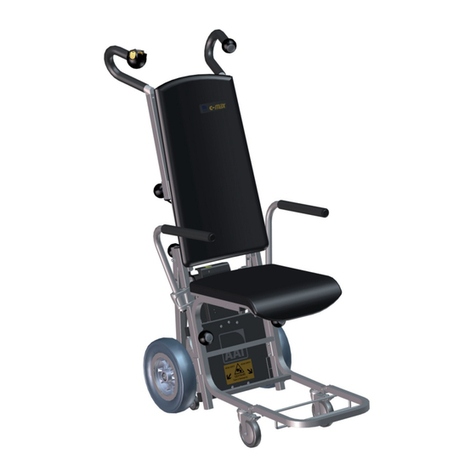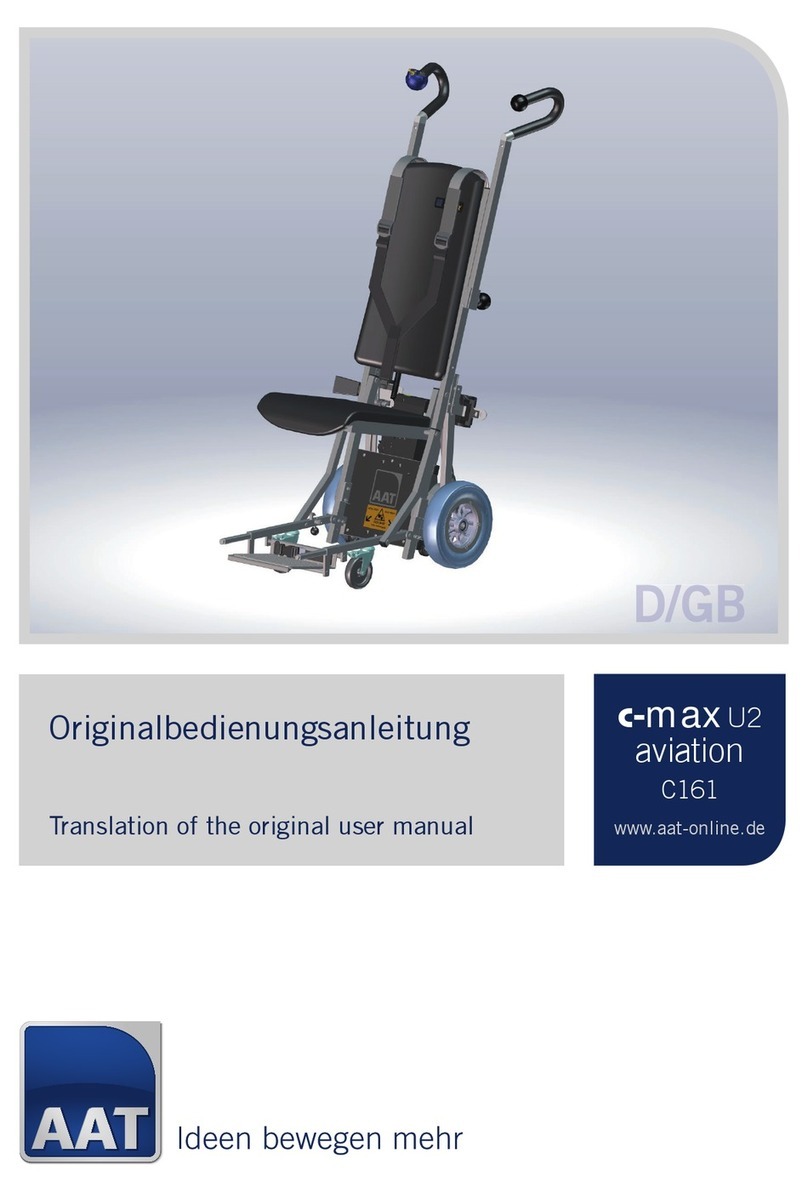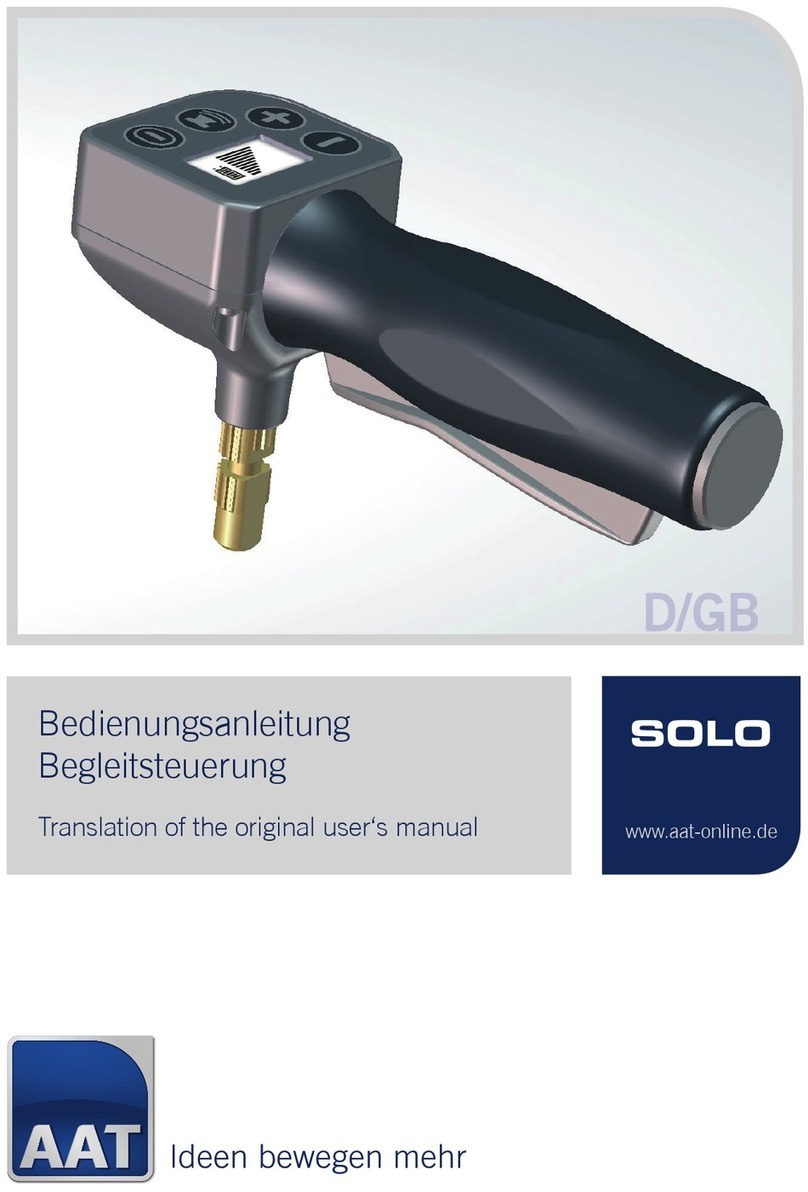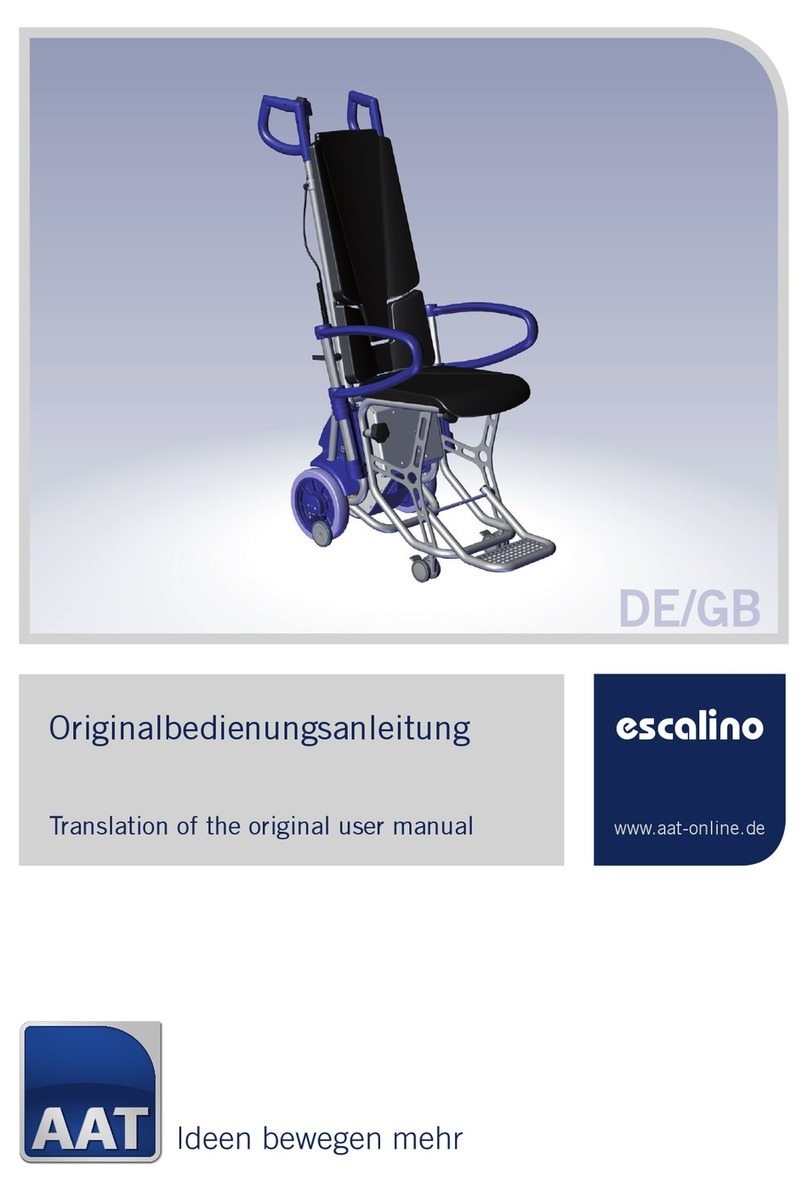
1 General information
Congratulations! With the acquisition of this stair climbing system you have
a device that will quickly become a reliable and indispensable partner in
transporting physically disabled people.
With the s-max you are able to transport one person safely and effortlessly
up- and downstairs; even winding stairs are no problem for the s-max. Dri-
ving on slopes is also possible. The safety brakes on both sides of the s-max
ensure your safety.
Naturally the s-max is also suitable to drive on level ground. The device is
lightweight, flexible and does not take up much space.
The s-max is capable of climbing stairs up to a step height of 22 cm. The mi-
nimum depth of the step’s surface must be 12 cm regardless of the type of
stairs (regular straight stairs or winding stairs).
The necessary step width concerning straight stairs is the width of the s-max
plus an extra 10 cm for manoeuvring.
The minimum platform size for u-shaped stairs depends on factors such as
the wheelchair’s dimensions, etc. Your AAT representative or your authorized
dealer are happy to advise you.
The sticker with the device’s serial number is located inside the batteries’
drawer. Remove the battery pack and read the number.
1.1 How to use this user's manual
The user's manual is part of the delivery package and instruct you step by
step about the safe and adequate use of the s-max. Operating the s-max ta-
kes a certain skill.
Please read this user’s manual carefully and particularly take note of the sa-
fety instructions before you use the s-max for the first time.
After reading, please store this user's manual at an appropriate place for furt-
her reference.
1.2 Instruction
In the interest of your safety the s-max may only be operated by trained per-
sonnel.
Instruction on how to operate the device is part of the delivery package and
takes place with your authorized dealer or an AAT representative.
FPlease read this user’s manual carefully and particularly take note of
the safety instructions before you use the s-max for the first time.
1.3 Care and maintenance
One of the most important aspects concerning the maintenance of the s-max
is charging the sealed lead acid batteries. They are part of the battery pack
and must be charged every time after using the device.
Other than that your s-max does not need much care or maintenance. More
extensive instructions you find in chapter 8.
1.4 Warranty and liability
For damage that was caused by inadequate use disregarding this manual we
assume no liability whatsoever. (Please read chapter 9 for more detailed in-
formation concerning warranty and liability).
5
S-max































